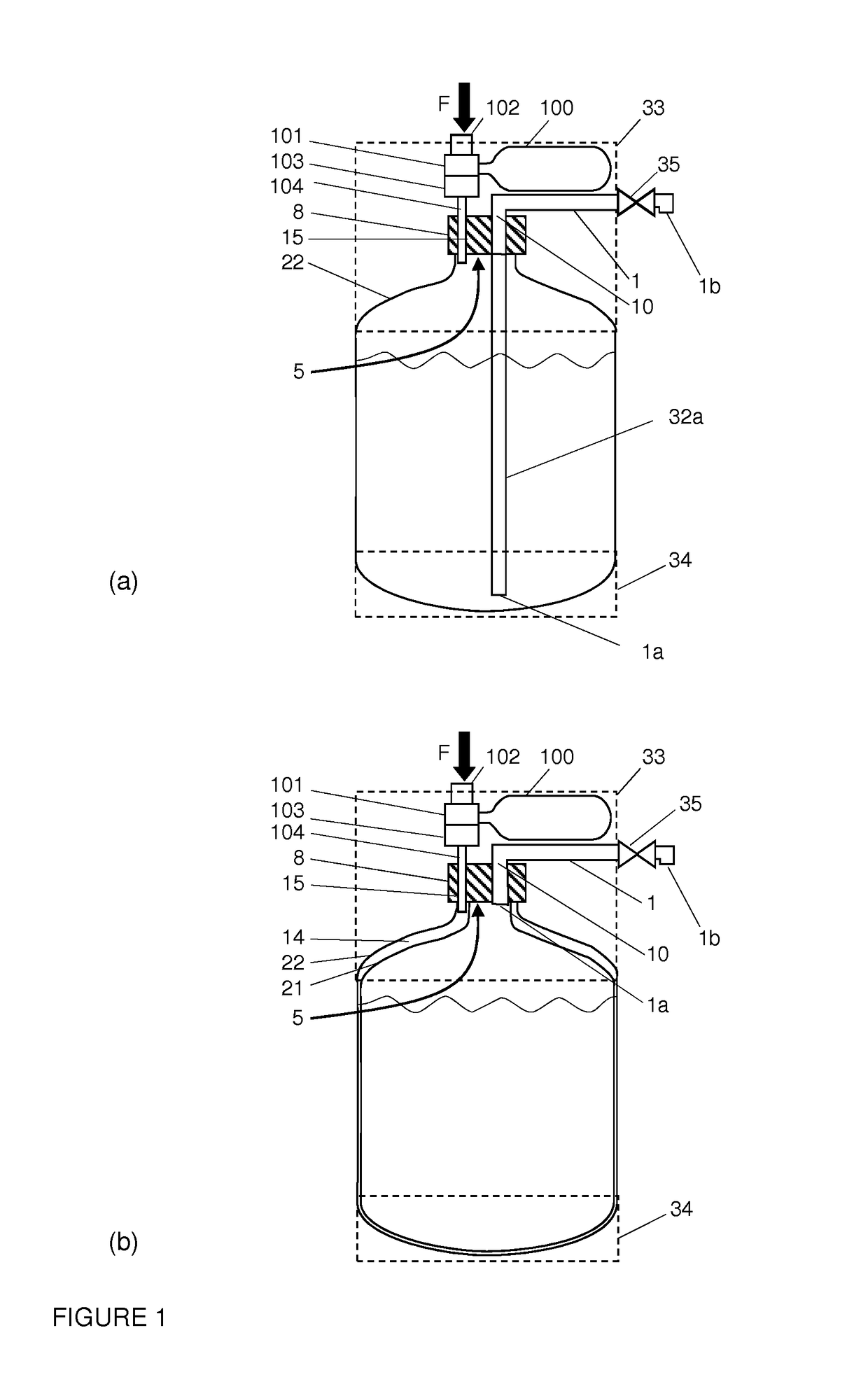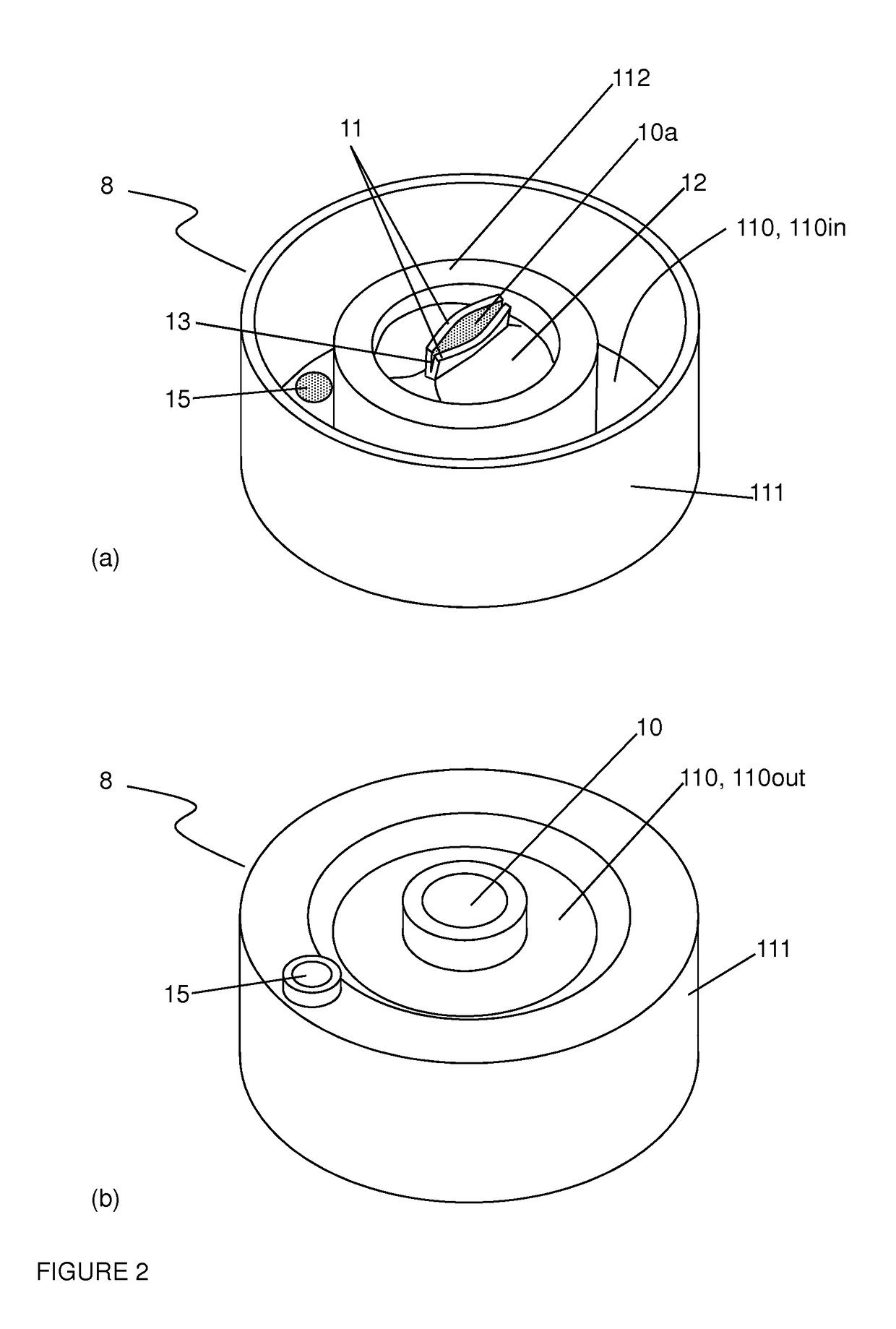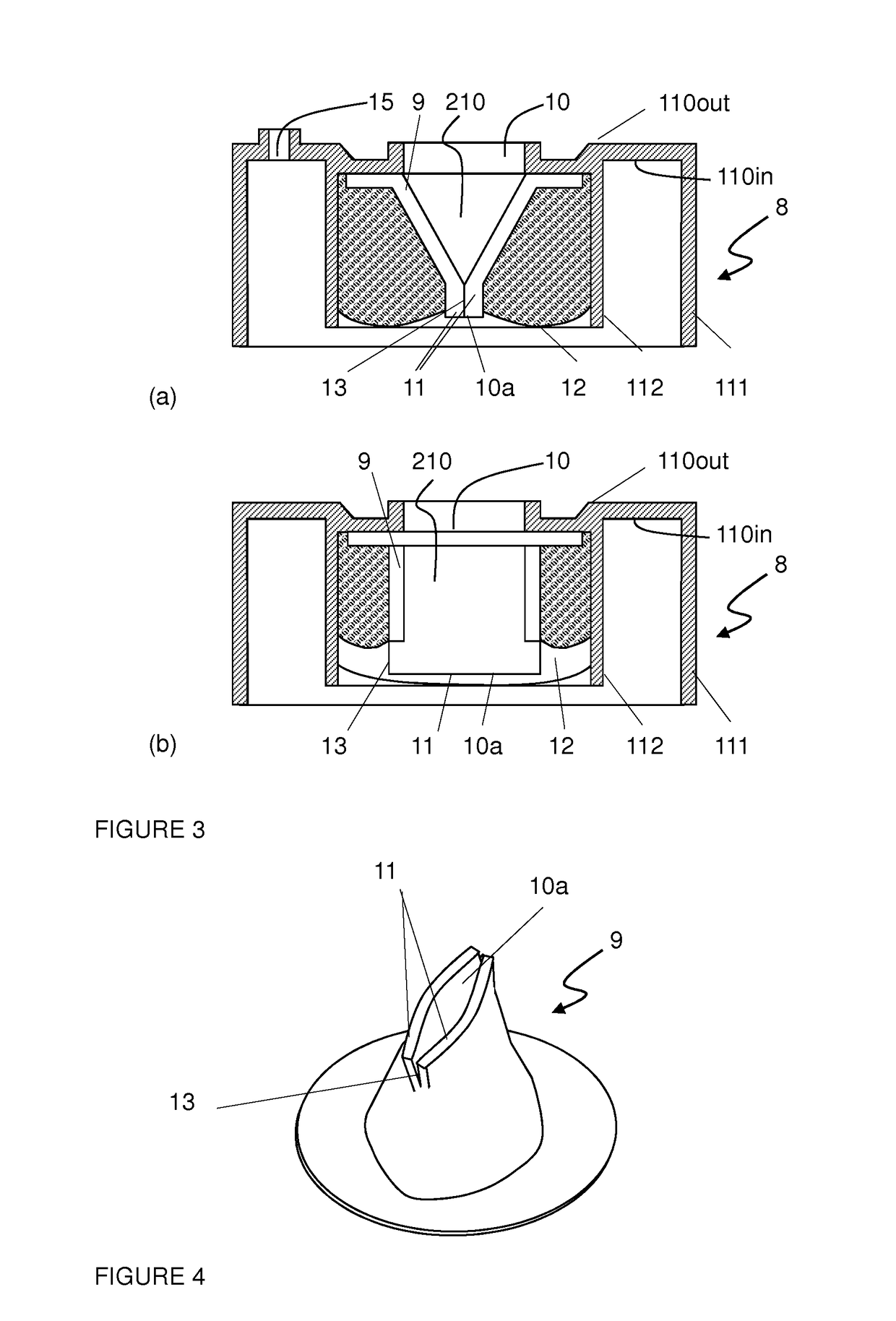Resilient closure for pressure driven dispensing container
a technology of pressure-driven dispensing containers and resilient closures, which is applied in the direction of functional valves, pliable tubular containers, manufacturing tools, etc., can solve the problems of not quite so widespread, operation may be cumbersome, and the outside container must be sufficiently robust to resist deformation under relatively high pressure, etc., to achieve simple and cheaper production
- Summary
- Abstract
- Description
- Claims
- Application Information
AI Technical Summary
Benefits of technology
Problems solved by technology
Method used
Image
Examples
first embodiment
[0067]The valve (9) and resilient means (12) may be produced separately or simultaneously as explained below. In a first embodiment, the flexible valve (9) may either be injected and formed onto the inner surface (110in) of the closure, or a separately produced valve (9) may be positioned on top of the inner surface (110in). In both cases, the flexible valve (9) shall define an interior passageway (210) having a first opening at one end adjacent to and in fluid communication with the first dispensing aperture (10) and having a second opening (10a) at the other end of the passageway. An embodiment of such separately manufactured valve (9) is illustrated in FIG. 4, preferably comprising a peripheral flange allowing to fix it in position upon injection of the resilient means against the inner surface (110in) of the planar surface (110) in communication with the first aperture (10). Various designs of valves suitable for the present invention are described in US2007 / 0138189 disclosing a...
second embodiment
[0070]In a second embodiment, the valve is formed together with the resilient means, by a single injection of polymeric material comprising a foaming agent. It was observed that the foam density being higher at the surfaces contacting the tool walls and in restricted or narrow regions of the mould than in the bulk of the foam, it was possible to form with a single injection of a single expanding material the valve (9) and resilient means (12), the valve (9) having two lips (11) and a passageway (210) with walls of density higher than the density of the bulk forming the resilient means (12). In this configuration the resilient means (12) are separated from the valve by an interphase rather than an interface, wherein the density of the foam progressively increases. This embodiment is particularly advantageous in terms of production rate, production cost, and recyclability of the closure over any other closure comprising a resilient valve for gas driven dispensing containers on the mar...
PUM
| Property | Measurement | Unit |
|---|---|---|
| pressure | aaaaa | aaaaa |
| pressure | aaaaa | aaaaa |
| flow rate | aaaaa | aaaaa |
Abstract
Description
Claims
Application Information
 Login to View More
Login to View More - R&D
- Intellectual Property
- Life Sciences
- Materials
- Tech Scout
- Unparalleled Data Quality
- Higher Quality Content
- 60% Fewer Hallucinations
Browse by: Latest US Patents, China's latest patents, Technical Efficacy Thesaurus, Application Domain, Technology Topic, Popular Technical Reports.
© 2025 PatSnap. All rights reserved.Legal|Privacy policy|Modern Slavery Act Transparency Statement|Sitemap|About US| Contact US: help@patsnap.com



